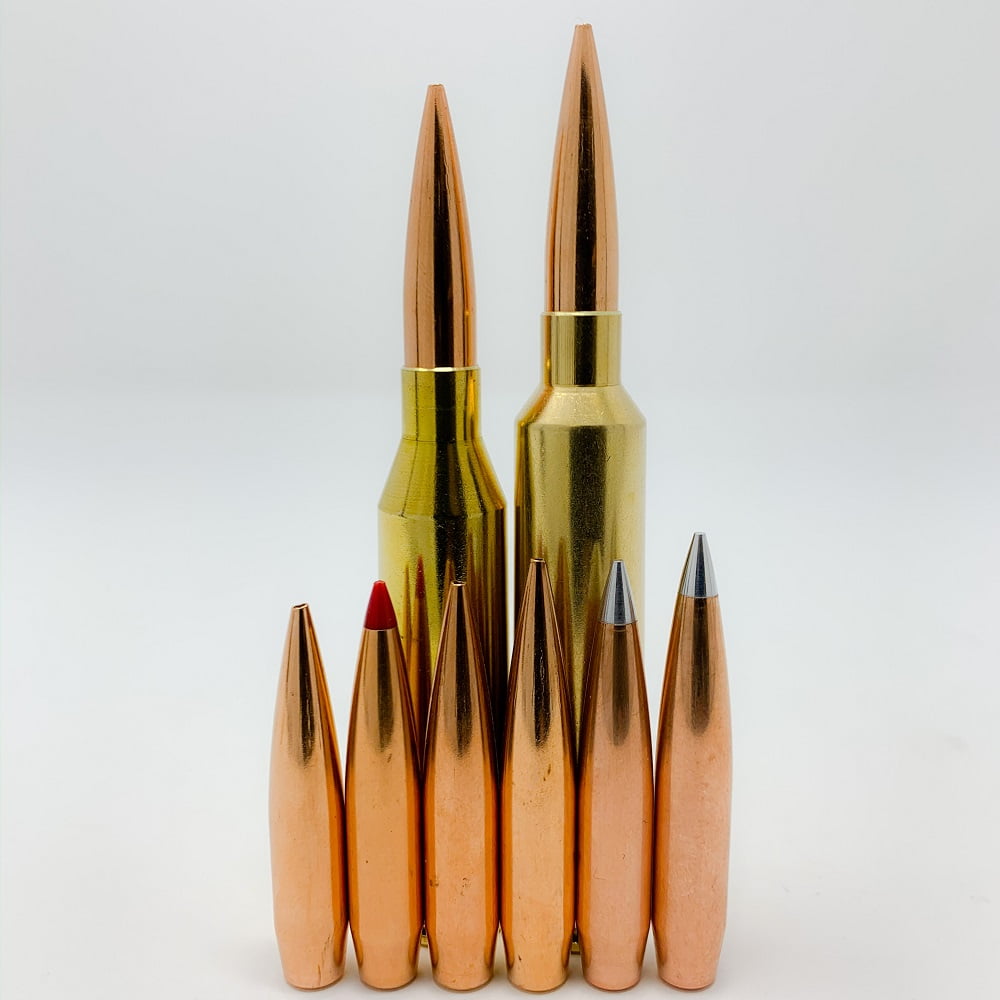
Whether for hunting, competition, Law Enforcement, Special Ops, or long-range target shooting, load development always starts with a conversation and decisions to make. What are you planning to use this rifle for? What are your goals? And, what is the furthest distance you plan to shoot? Do you have a bullet in mind already? Is your twist rate fast enough to stabilize that bullet? Will your max COAL allow you to utilize the full capacity of that cartridge/bullet? Having a clearly defined set of goals that both the team at Unknown Munitions and the customer both understand helps us begin the project on the right foot.

“I want to shoot those new 245 Berger EOL Elite Hunters at 3100 FPS with VV-N570,” he says. This project obviously started with a clear goal in mind and we were off to the races.

Load Development
Our first step was to deconstruct a cartridge that he delivered with the rifle to better understand the previous load data. Measuring cartridge overall length (COAL), cartridge base to ogive (CBTO), and powder charge provide some initial load data to work with. Next, we measure the throat of the 300 Terminator chamber as a baseline that will be used extensively during both the initial optimal charge weight (OCW) ladder and bullet seating depth ladder test later on.
Measuring The Rifle
We take five measurements with the Hornady OAL gauge and average them out, as they always vary slightly either way. Next, we use this CBTO to find the COAL using the customer’s requested bullet type and chambered cartridge. This is important to determine if any conflict might occur with either the BDL or DBM max COAL. In this case even touching the lands, our 3.945” COAL would still fit in the rifle’s BDL, while also allowing some additional room to chase the lands as this monster cartridge begins to burn the throat forward.

Powder Charge
Deciding on a beginning powder charge and powder charge increment during the initial optimal charge weight test can be a daunting task. Trying to locate reliable data on forums, looking through reloading manuals, and asking friends normally ends up putting you in the ballpark. Here at Unknown Munitions, we have a library of load data collected during actual load developments that enable us to fine-tune that starting point and allows us to move quickly through the decision making process.

Measuring Powder Charge
The A&D FX-120i scales make short work of kernel accurate powder throws and eliminate this variable from calculations down the development line. It is imperative that you use accurate measuring techniques to execute this test properly or risk a load that may shoot well now, but disappoints the shooter later on. We normally load the entire OCW ladder test .020” off the lands to avoid any additional pressure issues caused by bullet placement.

Load Development Calculator
After shooting through the ladder test while measuring velocities with a Magnetospeed V3 chronograph, we can enter the data into our proprietary load development calculator. This tool helps us to visualize load data, and find that perfect node. Not too fast, not too slow, but just right. Right there in the middle of a plateau that will be more forgiving later on to less than optimal powder charges if necessary. We spend only a small amount of time looking at groups during this first phase of tests. Our goal here is to find the tightest standard deviation that will allow for consistent muzzle velocities when reaching out downrange.

Seating Depth
The next phase is the seating depth ladder test. That’s where we do analyze group size to determine the proper bullet jump in our customer’s rifle. The test starts with three rounds touching the lands, then progressively moving away at .020” each jump ending .100” away. This allows for optimal sample size when deciding on the final load. We can normally find what we’re looking for using this process. We take time to shoot each group while letting the barrel cool properly between strings. There are always some variables that will affect group size and we are not always the best shooters on our best day! But it is comparative data through which to select a jump. Meaning, that all groups are fired by the same shooter in the same conditions with a relatively temperature stable barrel.

Know What You Want
Bullets prefer a certain seating depth range. Powders are known to work well in specific cartridges and case fill. And some powders are known as a hot rod. That’s great if your goal is to produce the most insane velocities ever to bless a shooter. Do your own research before deciding what you want to shoot out of your rifle. That will help get the most out of your load development. It is a time-consuming project if not vetted properly at the outset. The more specific you are with your load development request, the more specific you can expect your results to be.

Feel free to contact us if you have any load development questions or any questions at all! We are committed to our customers and always willing to help a shooter reach his target!
You can comment on this article or ask Jake questions here.

















